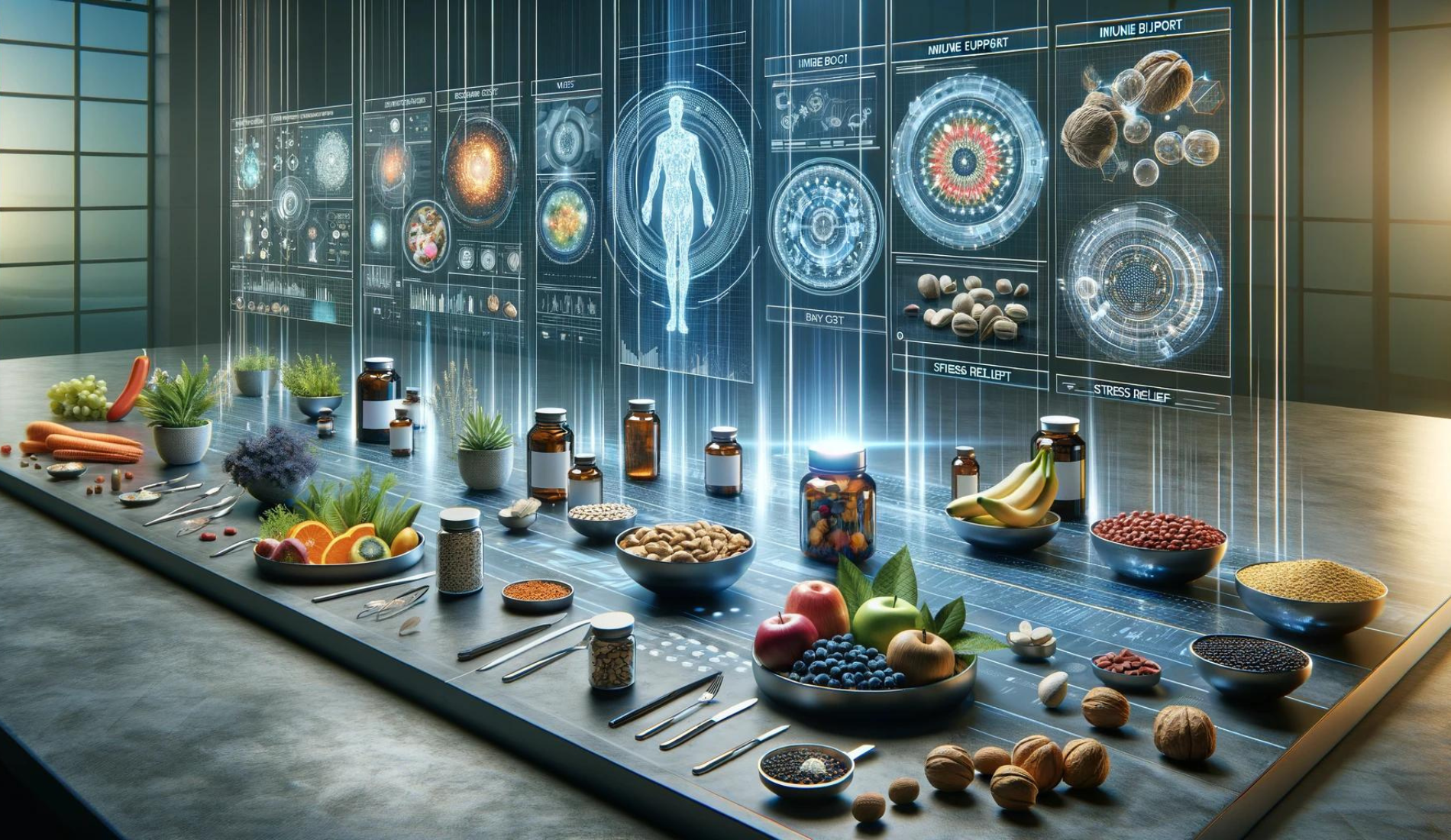
Table of Contents
Key Takeaways
- Functional B1 deficiency often goes undetected by standard lab tests.
- Common symptoms include fatigue, brain fog, mood swings, and digestive issues.
- Causes include poor absorption, chronic stress, medications, and poor diet.
- Solutions include B1-rich foods, B-complex supplements, and functional testing.
- Functional medicine may help uncover and treat hidden nutrient imbalances.
Introduction
It’s common to feel off sometimes—low energy, trouble focusing, occasional digestive issues—but when these symptoms persist, it’s worth asking why.
One possible factor is functional vitamin B1 (thiamine) deficiency. This isn’t about having dangerously low levels in a blood test. Instead, it’s when your body has trouble using thiamine efficiently, even if levels appear normal on paper.
Thiamine plays a key role in energy metabolism, nervous system function, and digestion. When your body can’t use it properly, you might feel the effects in subtle but noticeable ways.
In this article, we’ll cover functional thiamine deficiency, its signs, what may be causing it, and simple ways to support your body if this nutrient is failing.
What Is Functional Thiamine Deficiency?
Functional thiamine deficiency happens when your body has enough vitamin B1 in circulation, but it can’t properly use it where it’s needed—inside your cells. This is different from a classic deficiency, where there’s not enough thiamine in the diet or bloodstream.
Thiamine is essential for converting food into energy, supporting nerve signals, and keeping digestion on track. So even a small drop in how well your body processes it can affect how you feel—physically and mentally.
Because standard lab tests usually measure thiamine in the blood, not inside the cells, this type of deficiency is often overlooked. It’s not uncommon to be told everything looks normal, even if your body is struggling to use B1 efficiently.
Signs of a B1 Deficiency
Functional B1 deficiency can be easy to miss, but your body may be giving you clues. Here are seven common signs to be aware of:
| Sign | Description |
|---|---|
| 1. Constant Fatigue | Feeling tired even after rest. Thiamine helps convert carbs into energy—low levels leave you running on empty. |
| 2. Brain Fog or Poor Memory | Thiamine supports brain function. Deficiency can cause forgetfulness, poor focus, or mental sluggishness. |
| 3. Digestive Problems | B1 supports gut motility. Low levels may cause bloating, constipation, or slow digestion. |
| 4. Anxiety or Mood Swings | Thiamine helps regulate the nervous system. Low levels may trigger irritability or anxiety. |
| 5. Tingling or Numbness | Also known as peripheral neuropathy—nerves may misfire without enough B1, causing pins and needles. |
| 6. Muscle Weakness or Coordination Issues | Muscles rely on B1 for strength and control. A drop can lead to weakness or feeling unsteady. |
| 7. Eye Twitching or Visual Disturbances | Nerve-related symptoms like twitching eyelids or light sensitivity can signal thiamine imbalance. |
What Causes It?
Functional thiamine deficiency isn’t always about how much B1 you consume—it’s often about how well your body absorbs, stores, and uses it. Several everyday factors can quietly lower your B1 levels or block its effectiveness:
- High-carb, low-nutrient diets: Refined carbohydrates increase the demand for B1, especially when nutrients are lacking elsewhere in the diet.
- Alcohol use: Alcohol interferes with both the absorption and storage of thiamine, increasing the risk of deficiency.
- Medications: Diuretics, acid-blockers, antibiotics, and birth control pills can reduce thiamine absorption or increase excretion.
- Chronic stress: Physical and emotional stress raise metabolic demand, using up B1 more quickly.
- Digestive disorders: Conditions like IBS, Crohn’s, and celiac disease can impair nutrient absorption, even when intake is adequate.
- Cooking and processing: Boiling, refining, or overprocessing foods can strip thiamine content significantly.
In many cases, a combination of these factors—not just one—leads to a functional deficiency over time.
What Can You Do?
If you suspect a functional B1 deficiency, the good news is that it's manageable with the right approach. Here are practical steps to help support your body and restore balance:
- Focus on B1-rich foods: Eat pork, sunflower seeds, navy beans, peas, brown rice, and whole grains regularly.
- Consider a B-complex supplement: Thiamine often works best alongside other B vitamins. A full-spectrum B-complex may offer better support than B1 alone.
- Review your medications: If you're taking diuretics, antacids, antibiotics, or hormonal birth control, talk to your provider about potential nutrient depletion.
- Reduce alcohol intake: Alcohol impairs B1 absorption and storage. Cutting back can help your body retain more of what it gets.
- Work with a functional medicine practitioner: They can help assess nutrient imbalances using more in-depth testing, including cellular-level evaluations.
- Listen to your body: If symptoms improve after dietary changes or supplementation, that’s a valuable clue—even if standard tests come back “normal.”
Small adjustments to your diet, supplement routine, or lifestyle can make a noticeable difference in how you feel, often more quickly than expected.
Poor Absorption and Low Dietary Intake
Even if you're eating a reasonably balanced diet, you can still fall short on vitamin B1. That’s because thiamine is easily destroyed during cooking, lost in food processing, and poorly absorbed if your gut health is compromised. Over time, this adds up.
Conditions like IBS, Crohn’s, and celiac disease may block the absorption of B1 in the small intestine. And if your diet leans heavily on refined carbs—like white rice, white bread, or sugary foods—you’re not only getting less thiamine, but you’re using more of it to metabolize those carbs.
Here’s a look at how much thiamine you can get from common foods:
Thiamine Content in Common Foods
| Food Source | Serving Size | Thiamine Content (mg) |
|---|---|---|
| Pork (lean, cooked) | 3 oz (85 g) | 0.81 mg |
| Sunflower seeds (dry roasted) | 1 oz (28 g) | 1.1 mg |
| Navy beans (cooked) | 1 cup (182 g) | 0.36 mg |
| Brown rice (cooked) | 1 cup (160 g) | 0.19 mg |
| Green peas (cooked) | 1 cup (160 g) | 0.26 mg |
| Whole wheat bread | 1 slice (28 g) | 0.10 mg |
The recommended daily intake for adults is around 1.1–1.2 mg, meaning just one or two servings of these foods may not meet your daily needs—especially if your body is under stress or not absorbing nutrients well.
Frequently Asked Questions (FAQ)
Yes. Even with good food choices, factors like stress, medications, alcohol, or digestive issues can impact how well your body absorbs or uses thiamine.
Some people feel improvements within days, especially in energy or mental clarity. For others, it may take a few weeks, depending on severity and consistency.
Generally, yes—B vitamins are water-soluble, so excess is usually excreted. Still, consult your healthcare provider if you’re on medication or managing a condition.
Benfotiamine and Thiamine HCl are both effective. Benfotiamine is more easily absorbed and retained. Functional practitioners may also use thiamine pyrophosphate (TPP).
Not always. Standard labs measure blood levels, not cellular use. Functional testing or observing response to supplementation may offer better insights.
Conclusion
Functional thiamine (B1) deficiency often flies under the radar, but its effects can be felt in everyday life—fatigue, brain fog, low mood, or digestive discomfort. Even when blood tests look normal, your body may still be missing the cellular support it needs.
The good news is, this is something you can address. Whether through a few changes in your diet, better supplement support, or simply paying closer attention to how your body responds, small steps can make a big difference.
If this article resonated with you, consider speaking with a healthcare provider who understands nutrient function beyond the basics. Your body might not be broken—it might just need better fuel.
Disclaimer
This content is for informational and educational purposes only and is not intended as medical advice, diagnosis, or treatment. Always consult with a qualified healthcare provider before making changes to your diet, supplements, or healthcare routine, especially if you have a medical condition or are taking medications.
While we aim to provide accurate and up-to-date information, individual needs vary. The use of any information provided on this site is solely at your own risk.
References
-
Vitamin B1 (Thiamine) – Mount Sinai Health Library
https://www.mountsinai.org/health-library/supplement/vitamin-b1-thiamine
Retrieved April 12, 2025. -
Vitamin B1 (Thiamine): Benefits and Sources – Medical News Today
https://www.medicalnewstoday.com/articles/219545
Retrieved April 12, 2025. -
Thiamine and Brain Function – Frontiers in Psychiatry
https://www.frontiersin.org/journals/psychiatry/articles/10.3389/fpsyt.2019.00207/full
Retrieved April 12, 2025. -
Thiamine Pyrophosphate – ScienceDirect Topics
https://www.sciencedirect.com/topics/biochemistry-genetics-and-molecular-biology/thiamine-pyrophosphate
Retrieved April 12, 2025. -
Structure and Function of Thiamine Enzymes – ACS Publications
https://pubs.acs.org/doi/10.1021/bi401618y
Retrieved April 12, 2025. -
Thiamine Deficiency – MSD Manual
https://www.msdmanuals.com/home/disorders-of-nutrition/vitamins/thiamin-deficiency
Retrieved April 12, 2025. -
Alcohol-Related Thiamine Deficiency – Alcohol and Drug Foundation (ADF)
https://adf.org.au/insights/alcohol-related-thiamine-deficiency/
Retrieved April 12, 2025. -
Thiamine – Nutrition Source, Harvard T.H. Chan School of Public Health
https://nutritionsource.hsph.harvard.edu/vitamin-b1/
Retrieved April 12, 2025. -
High Thiamine (B1) Foods – WebMD
https://www.webmd.com/diet/high-thiamine-b1-foods
Retrieved April 12, 2025. -
Thiamine Deficiency and Benfotiamine Therapy in Brain Diseases – Biomedical Science Journal
https://biomedgrid.com/fulltext/volume3/thiamine-deficiency-and-benfotiamine-therapy-in-brain-diseases.000621.php
Retrieved April 12, 2025.


























































